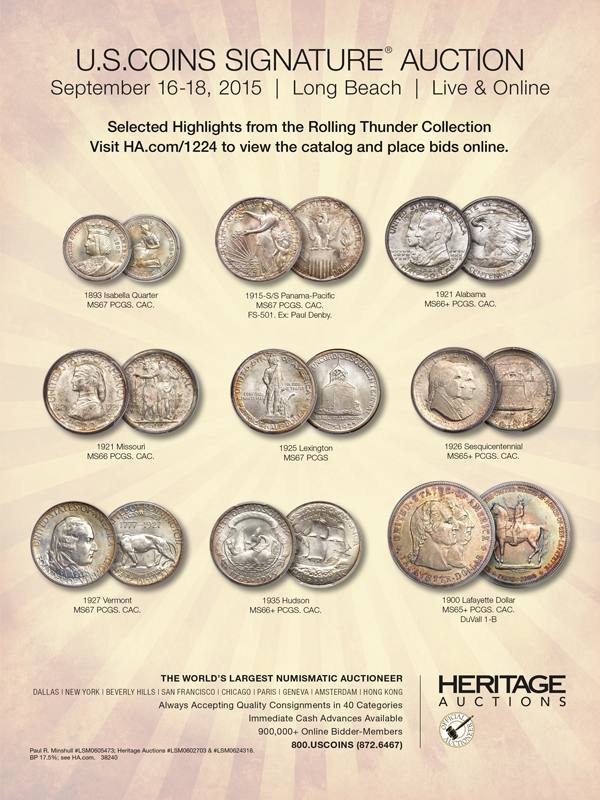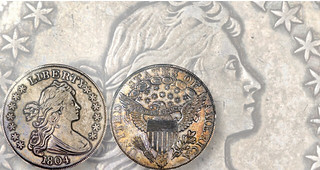
PREV ARTICLE
NEXT ARTICLE
FULL ISSUE
PREV FULL ISSUE
U.S. COINS WITH SHADY BACKSTORIES
While not a surprise to most E-Sylum readers, many of the most valuable U.S. "coins" aren't really coins after all,
and came into existence (or into the numismatic marketplace) under questionable circumstances. Bill Eckberg takes a number of high
profile pieces down a peg or two with his analysis beginning in this Coin World article published August 21, 2015. -Editor
Numismatics is not immune to fallacy; numerous examples could be produced in which yesterday’s correlation or notion became today’s “fact.” In some cases, new discoveries have cleared up the fallacies, but in other cases, the fallacies have died hard or not at all. With so many really rare coins appearing on the market recently, it’s easy to forget that some of the rarest, priciest and most “significant” rare coins aren’t really coins at all. The Merriam-Webster definition of a coin reads: “a small, flat, and usually round piece of metal issued by a government as money.” The key element we focus on here is that it must be “issued by a government as money.” That keeps out a number of very famous “coins.” The 1913 Liberty Head 5-cent coins, 1884 and 1885 Trade dollars, and restrike 1804 dollars were produced clandestinely and illegally, apparently at the Mint, for private profit. Courts are still deciding whether 1933 Saint-Gaudens double eagles are money. Many more examples could be given. It is probably fair to stretch the definition of “coin” to include pattern coins, such as the 1907 Saint-Gaudens, Ultra High Relief, Roman Numerals double eagles, as there is at least the presumption that a government was considering issuing the designs as money. There are, however, several “rare coins” that fail to meet the definition of “coin,” even if we stretch it to include patterns. Eric Newman and Ken Bressett’s famous book is titled The Fantastic 1804 Dollar for more than one reason. The stories of how the 1804 dollars came to be and how Newman and Bressett learned about their origin are pretty fantastic. But also, the coin is fantastic in the sense of being a fantasy piece. The “original” Class I 1804 dollars were issued by the U.S. government, but not as money (Classes II and III were produced clandestinely and illegally for sale to collectors beginning around 1859). Since they were never intended as money, 1804 dollars don’t fit our definition of coins.
Stay tuned for more installments. -Editor
To read the complete article, see:

Wayne Homren, Editor The Numismatic Bibliomania Society is a non-profit organization promoting numismatic literature. See our web site at coinbooks.org. To submit items for publication in The E-Sylum, write to the Editor at this address: whomren@gmail.com To subscribe go to: https://my.binhost.com/lists/listinfo/esylum All Rights Reserved. NBS Home Page Contact the NBS webmaster 
|
